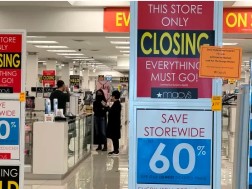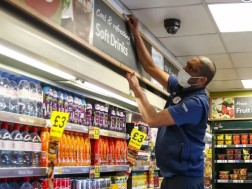Cushman & Wakefield depicts Market Snapshots Q3 2020.
Hospitality
In the first half of 2020 Georgia experienced a substantial slowdown in its economic activities due to Covid-19. The hospitality sector was not an exception as the Covid-19 adversely affected the number of visitors in the country, and the absence of tourists deteriorated hotel occupancy. However, in Q3 the tourism and hospitality industry got better off compared to previous months. By Q3 the quarantine had been finished and the epidemiologic situation in the country improved, seen in the reduced number of daily cases of the virus. Furthermore, Q3 usually reflects a high touristic season (July, August, September). As a result, some hotels that served as quarantine sites reopened again. People started to go on vacation. Railway travel also resumed and further boosted domestic travel.
Regarding the number of international guests, monthly arrivals of international visitors in 2020 Q3 should be noted and is as follows: 45,842 people in July, 43,658 in August, 53,430 in September - 142,930 visitors in total. Moreover, the total number of international visitors in Q2 totaled to 108,594, hence there was a slight increase in Q3. Notably, compared to this year the total number of monthly international visitors for Q3 in 2019 was much higher and totaled to 2,753,207. What’s more, the effects of Covid-19 are clear when comparing the number of international visitors in Georgia for the first three quarters Q1-3 for 2019 and 2020, the former being 5,982,811 and the latter 1,369,086 only, which is less by 77.1%. However, even though a significantly lower number of international tourists arrived in the country compared to summer 2019, Tbilisi still remains as a top destination for foreign travellers and hosts around 50-60% of all international guests. It is forecasted that in the following three months the number of international visitors will remain dwindling.
From the supply perspective, after the quarantine only several hotels reopened and had to strictly follow health and safety regulations, and carry out intensive disinfection procedures. Due to high additional costs and less revenue many of them had to cut the number of employees and even partially close the hotels and several amenities, such as spa centres, sauna, pool and gym. Notably, most hotels that operated in Q3 are located in popular seaside and mountain resorts of Georgia, where the majority of domestic tourists spent their holidays. Most hotels in Tbilisi remain closed.
Retail
Retail sector reopened in the third quarter given the decreasing number of COVID cases between July-August and the impression that the pandemic had been leashed. Pent up demand and reduced prices on out-of-season goods resulted in boosted revenues as people returned to street outlets and malls; however, the detrimental effects of the shutdown in Spring rippled out to the third quarter. Small boutiques closed down on main streets; Pekini and Chavchavadze Avenues have been particularly affected. Rustaveli Avenue has so far remained the majority of its tenants.
Some new players have appeared on the market. Ipekyol was introduced in June by Retail Group Georgia. On the other hand, Yargici, Promod and Banana Republic left the market. Moreover, most of the brand representatives couldn’t merchandise the Winter and Spring collection stocks so most of the summer, retailers were working on selling old collections. E-commerce was not as big of a topic as it became during the first two quarters.
Shopping centers have remained afloat but still reported reductions in traffic. Temperature control is installed at each entrance and disinfectants at each store. The area where shopping centers are particularly affected is entertainment: there was an expectation that cinemas would reopen in September but the rising number of COVID cases at the time crushed those expectations. The entertainment centers that were closed down have similarly remained shut and will not reopen for quite some time.
Office
The third quarter spelled somewhat of a return to normalcy for the office sector. Many of the tenants that had moved to working from home in the first and second quarters came back and repopulated the offices. However, this barely compensated for the lost revenue as well as increased occupancy due to lease terminations or expirations within the first half of 2020.
The summer was marked by increased regulation of office spaces. Central HVAC systems were kept off per the state regulation in majority of the offices and the mask wearing became a requirement. One of the means that office spaces employed to regain the trust of the tenants has been an increased attention on sanitary and disinfecting norms set in place. Indeed, many A and B Class centers have been going through disinfecting processes weekly or biweekly.
Overall, however, working from home has remained the route of choice for many end-users. Occupancy numbers have gradually been slipping all year and there is not much confidence that they will go back up within the short term. A Class business centers registered a 37% vacancy rate in the third quarter – the highest since 2018; B Class centers have been reporting an average vacancy rate of 34% - a disastrous climb considering the low double-digit vacancies these centers have enjoyed for the last few years. Rents have been quite immovable however given the operators’ unwillingness to lose their price niches. The main players in the sector have now to think more on the long-term strategies and how to adapt to the changing social landscape and attitudes towards centralized and densely populated workspaces.
















